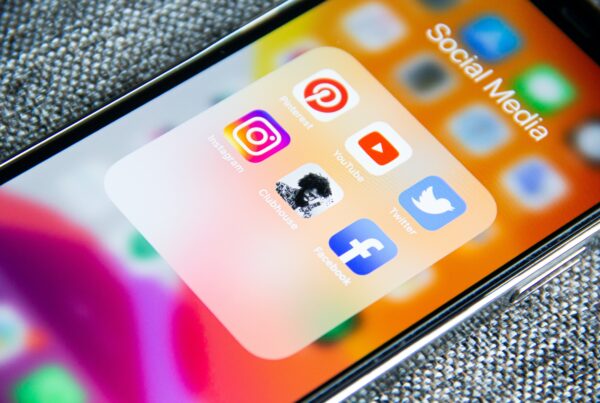We begin with a simple introduction on influencer marketing. Influencer marketing refers to the use of an influencer to promote a brand/product. An influencer is an individual who plays a part in shaping the perceptions and decisions of the people around them. For the sake of today’s article, we will be focusing on online influencers – those with a presence on social media.
Today, we would like to address 3 common misconceptions about influencer marketing
Influencer marketing misconceptions #1 – False followers and participants cannot be avoided:
Exposing this myth
That’s not true. Many influencers have large numbers of followers, but to distinguish if they follow them legitimately or if they have bought followers or likes requires marketing professionals to examine the growth and participation of followers. Participation of followers is commonly measured by the number of times a follower interacts with the influencer – by liking and commenting on postings etc. Growth of followers refers to change in total follower count.
To check the legitimacy of followers, analyse a series of metrics that include the tracking of anomalies in these growth and participation metrics. Ideal scenarios should see a linear growth with little or no extreme value. Any sharp or ‘unnatural’ change in follower count/ likes should raise doubts.
Influencer marketing misconceptions #2 – Brands never develop relationships with influencers:
Exposing this myth
While you might think of relationships between brands and influencers as a one-time transaction, that is not true. It is possible for brands and influencers to have long run collaborations. The inclusion of influencers from the beginning – from the initial ideas to the final product is how a strong relationship is formed. Collaboration in the creation of content facilitates the influencer-brand relationship.

Influencer marketing misconceptions #3 – ROI cannot be measured in an influencer marketing campaign:
Exposing this myth
While it may be tough to measure the exact number of sales revenues from a single post on social media, the combined effect of an influencer marketing campaign is measurable.
Common ROI measurements in influencer marketing include reach and engagement. Reach refers to the number of people that have seen the postings of an influencer marketing campaign, while engagement refers to the number of users who have liked or commented on the postings. For more influencer marketing ROI and results, you can refer to this article here.
The type of ROI a brand chooses to focus on depends on its personal goal. For example, if your goal is brand awareness, you might want to focus on reach, the number of people that have seen and heard about your brand thanks to influencer postings. On the other hand, if sales revenue is the main goal, engagement is important to measure the level of interest induced as a result of the influencer marketing campaign.
Steps you can take to ensure that a successful influencer marketing campaign,
How to make your influencer marketing campaign successful:
1. Tap into multiple online networks
Social networks are great places to market a product. With 1.7 billion users on Instagram and Facebook alone, the sheer number of customers at your reach is unimaginable. Social media is where we look for the right audience. It is where we connect with them. Therefore, tap into a few social media networks to reach out to a wider range of consumers.
Of course, the number of social media platforms ultimately chosen is about quality and not quantity. Pick a platform that is suited to your business. For example, Instagram is all about visual content and aesthetics. Therefore, it is suitable for businesses that are related to home decor, fashion, and art. On the other hand, YouTube is only about videos, making it is ideal for tutorials and product reviews. Thus, businesses in the tech, beauty sector can consider looking for Youtube influencers.
2. Choose the right influencer.
Influencer marketing can be a powerful tool if used well. But how do we the best fit influencer?
As there are different business categories, similarly, there are different categories of influencers. There are mainly four types of influencers, namely celebrity influencers, macro influencers, micro influencers and nano influencers. For more information about who they are and the respective pros and cons of each category read this article here.
Before selecting an influencer, you should perform an adequate exploration of what your products and objectives are, to see if the shortlisted influencers are in line with the campaign’s objectives. For example, if your campaign’s objective is to reach out to millennials, millennials influencers should be tapped in as their influence online is likely on millennials.
3. Start relationships
After the brand chooses the right influencers, the focus should be put on building and maintaining relationships with these influencers. As mentioned earlier, influencer-brand relationships can be so much more than a one-off business deal. The building of successful relationships can benefit a brand in the long run.
A good relationship ensures positive feedback from influencers even after the campaign has ended. For example, influencer shout outs in the form of a positive reviews online or interacting with the brand on social media. This is crucial in helping the brand gain exposure on social media. When influencers interact with brands online, it helps bring brands to the attention of the followers of these influencers. This is why many brands do attempt to build relationships with influencers.
And that is it! We hope we tore down some misconceptions you have about influencer marketing. If you would like to learn more about influencer marketing, do click here for a list of articles regarding influencer marketing topics.
References
toprankblog.com, 5-myths-influencer-marketing
adweek.com, 7-most-common-myths-and-misconceptions-about-influencer-marketing/
tune.com, successful-influencer-marketing-campaign-steps
marketing-schools.org, types-of-marketing






